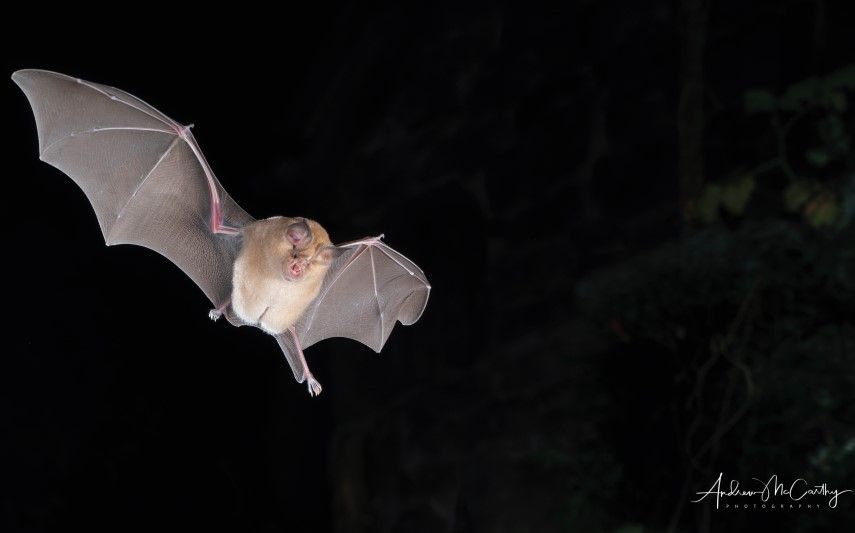Greater horseshoe bat

Status
Native and rare
Population
12,900
Scientific name
Rhinolophus ferrumequinum
Horseshoe bats have a distinctive horseshoe-shaped flap of skin on their nose, distinguishing them from other British bats. The noseleaf is used in echolocation to navigate and to locate prey. They are relatively large bats and hang freely upside down, wrapping their wings around themselves like a cloak. They emerge from their roosts about half an hour after sunset and generally fly close to the ground. When hunting, they hang on a perch and wait for insects to pass before flying out to catch them. In the last century, the number of horseshoe bats declined drastically across Europe (perhaps by over 90% in Britain) and although rare here, the population is of international importance.
Wingspan: 35 – 40cm
Weight: 17 – 34g
Lifespan: Up to 30 years
Reproduction
Mating takes place in autumn and females begin to form maternity colonies from May, typically of 50 – 200 individuals, but they can number up to 600. Usually a single pup is born in mid-July, the mother giving birth hanging upside down and catching the pup in her wings. Young are weaned by seven weeks. Females are not sexually mature until their third year, so populations can be slow to grow.
Diet
Beetles, including chafers and dung beetles, moths, crane flies and caddis flies.
Winter roosts
Comparatively warm sites, including caves, disused mines and tunnels; they frequently move between sites, flying up to 30km to a new roost.
Summer roosts
Mostly in buildings with uninterrupted access to a large, open roof space.
Habitat
Woodland edges, rides within woodland, and along hedgerows, as well as scrub and pasture, often close to water bodies.
Predators
Barn and tawny owls, sparrowhawks and domestic cats.
Threats
Starvation in late, cold springs; and pesticides, which reduce insect prey.
Ultrasound
They echolocate at a constant frequency of 82kHz that sounds like a series of continuous warbles on a bat detector.
Status and conservation
GB Red List: Least Concern (LC); Near Threatened (NT) in Wales. Ten maternity roosts and 27 winter roosts are designated as Sites of Special Scientific Interest (SSSIs) and 11 SSSIs have been designated Special Areas of Conservation (SACs).
Population size and distribution
GB population 12,900. The population may have increased since 1999 but the trend is uncertain. Their distribution is restricted to southwest England and south Wales. They are absent from Scotland and Ireland.
Did you know?
Horseshoe bats perform a skilled and perfectly timed somersault as they approach their chosen resting site. They flip sideways and grab a perch with their feet whilst breaking their momentum with outstretched wings.
